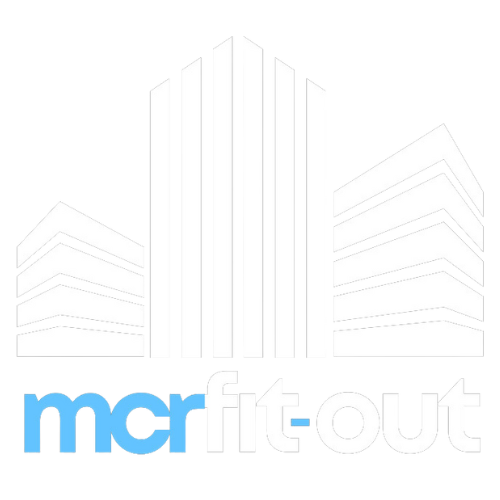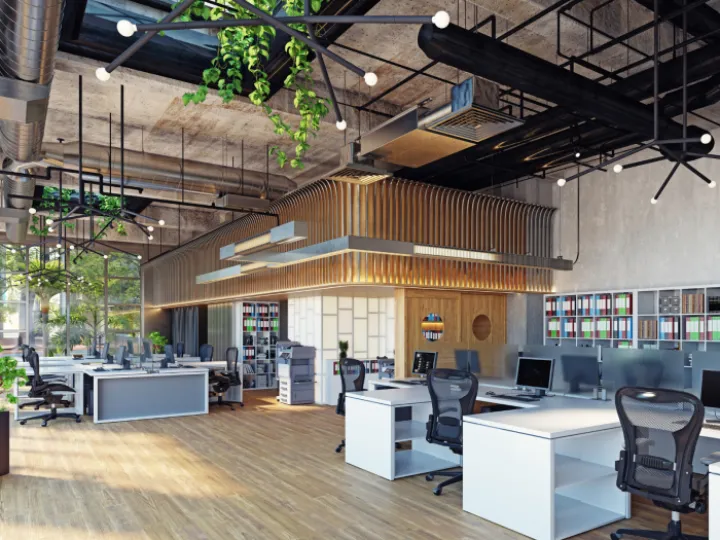The Value of an office fit-out
The Business Rationale for Office Fit Outs
In the modern landscape, businesses are rethinking how their offices function; the traditional cubicle maze has given way to collaborative spaces, ergonomic zones and employee-centred design. The question isn't just about style – it's about strategy. An office fit-out is no longer considered a cosmetic facelift; it is increasingly viewed as an investment that can deliver tangible business returns.
But, as with any capital expenditure, the success of an office refurbishment hinges on its ability to deliver measurable return on investment (ROI). With commercial real estate under pressure and hybrid work models reshaping usage patterns, companies must justify every square metre and every pound spent.
A modern fit-out encompasses more than furniture. It involves infrastructure upgrades, acoustic treatments, energy-efficiency enhancements, and smart technologies that foster flexibility and improve workflow. For organisations still operating in outdated, inefficient environments, the fit-out becomes a tool of transformation. However, decision-makers must scrutinise the outlay in light of long-term value, including leasing advantages, improved staff retention, and enhanced brand perception.
Calculating the True ROI of an Office Fit Out
While the upfront office fit-out cost can be substantial, often ranging between £50 and £150 per square foot, depending on the specification, the long-term benefits frequently outweigh the initial expenditure. ROI must be calculated holistically. In this context, it includes not only financial returns but also operational efficiency, employee well-being and talent attraction.
One quantifiable method involves comparing pre- and post-fit-out performance metrics. These might include reductions in sick leave, increased revenue per employee, or enhanced space utilisation rates. For instance, a company that upgrades to an agile workspace model may discover that fewer desks and workstations are needed, significantly reducing overhead.
Others might observe a surge in productivity; studies have consistently shown that workplace design can impact staff concentration, motivation, and collaboration. The inclusion of rest areas, acoustic zoning, and biophilic elements all contribute to these measurable gains.
Employee Experience is The Silent ROI Driver
Rarely captured in spreadsheets, the impact of a modern office refurbishment on employees can be profound. Workers now expect more from their environments: natural light, comfortable seating, breakout spaces, and tech-enabled meeting areas are no longer perks; they're prerequisites. A thoughtful fit-out improves morale and fosters a sense of belonging. This, in turn, drives productivity and reduces churn, key cost centres for any organisation.
HR departments increasingly link fit-outs with retention strategies. A high-quality physical environment supports well-being, reduces burnout and strengthens corporate culture. In a knowledge economy, where people are an organisation's greatest asset, the ROI on employee satisfaction should not be underestimated. Indeed, the return on office renovation may manifest most clearly in happier, more loyal staff. Furthermore, clients and visitors form impressions based on the space's aesthetics and layout, which directly influence business development outcomes.
Trends Shaping Office Fit-Out Value
Today's commercial interior design trends prioritise flexibility and future-proofing. Modular furniture, tech integration and sustainability are no longer optional; they're embedded into sound design. Fit-outs are increasingly planned with lifecycle thinking in mind; materials are chosen for durability, and layout plans anticipate growth or contraction. The result is a space that evolves with the company, extending its usable lifespan and minimising future disruption.
Sustainability credentials also contribute to ROI. Energy-efficient lighting and HVAC systems, as well as low-VOC materials and certifications such as BREEAM or WELL , can reduce operating costs and enhance a company's ESG profile. As ESG regulations tighten and clients demand accountability, the workspace becomes a reflection of corporate responsibility. A smartly executed fit-out, therefore, supports not only internal operations but external reputation.
Making the Case For a Fit-Out
When pitching an office fit-out internally, a comprehensive ROI argument must be made. This should encompass both tangible returns, such as reduced real estate costs and improved workspace ROI, and intangible benefits, including enhanced brand equity and talent retention. Stakeholders, particularly CFOs, will require hard numbers: forecasts, benchmarks and case studies can all be valuable here.
The most successful fit-outs align with strategic goals. Whether it's to attract top talent, retain clients or transition to hybrid working, the fit-out must serve a defined purpose. Working with experienced consultants and designers ensures that space planning, budgeting and execution all support this vision. Ultimately, the office is not merely a place to work; it is a business tool. Invested wisely, it pays dividends far beyond the balance sheet.

